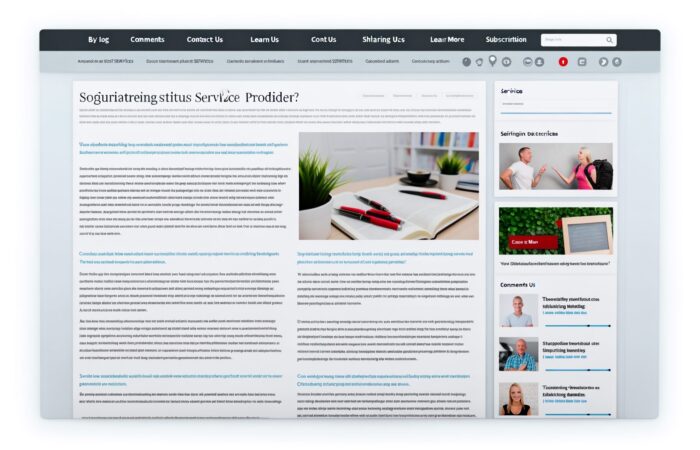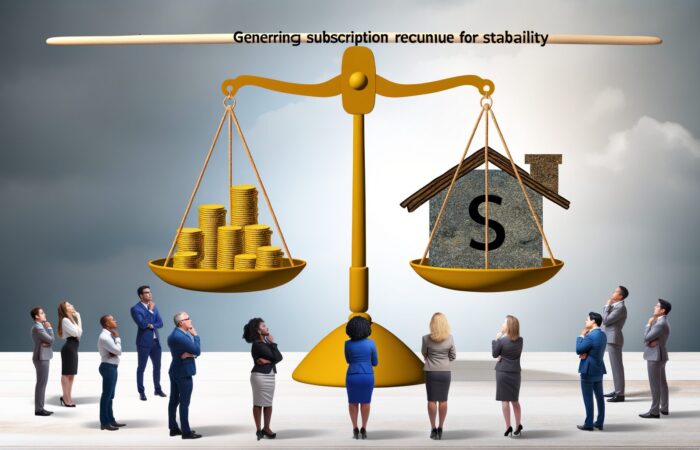Hey there! If you’ve been blogging or are thinking about jumping into this exciting world, you might have stumbled upon the term SEO (Search Engine Optimization). Now, don’t let the jargon intimidate you. Essentially, SEO is all about making your blog posts more visible on search engines like Google. And who doesn’t want that? More visibility means more readers, and more readers could lead to more opportunities—whether you’re looking to influence, inform, or simply share what you love.
So, you ask, “Why should I care about SEO as a blogger?” Great question! Picture this: You spend hours, perhaps days, crafting the perfect blog post. You hit publish, and then… crickets. It’s disheartening, right? This is where SEO comes into play. By embracing SEO strategies, you can help ensure that your hard work gets the audience it deserves. It’s not just about getting traffic but the right traffic; people genuinely interested in what you’re writing about.
Think of SEO as the bridge that connects your blog to potential readers. Without this bridge, your blog is an island—beautiful and full of treasures but hard for people to find. SEO comprises various tactics that help improve your blog’s visibility and rank higher in search engine results. High rankings increase your blog’s chances of being clicked when someone searches for topics you’ve written about. In a world where the majority of online experiences start with a search engine, SEO is more crucial than ever.
Now, incorporating SEO into your blogging doesn’t mean sacrificing your style or voice. On the contrary, it’s about enhancing what you already do so well, making minor tweaks that can lead to major gains. Whether it’s the way you title your posts, how you organize your content, or the words you choose to focus on, a bit of SEO knowledge can go a long way.
I know it can sound a bit technical, but don’t worry—I’m here to guide you through this. You won’t need to become a tech whiz overnight. Simple, actionable steps can tremendously impact how your blog performs in search results. Moreover, think about the satisfying feeling of seeing your blog posts climb up the search rankings, gaining the recognition and readership they deserve. It’s quite rewarding!
So, get ready to make your blog not just a destination but a discoverable destination. Embrace the power of SEO and watch as your blog begins to flourish and reach more people than you ever imagined. Stick with me, and let’s dive deeper into how you can select the right keywords, optimize your blog’s structure, and much more to make the most out of your blogging efforts. It’s going to be a fun ride!
Selecting the Right Keywords
When it comes to SEO, think of keywords as the golden tickets that invite readers to your blog’s grand premiere. Picking the right ones? Well, that’s a blend of art and science. Let’s break down how you can master this crucial skill.
Understanding Keyword Relevance
First things first: relevance is king. Tapping into the specific interests and search queries of your audience will guide you to the most effective keywords. Ask yourself, “What would my target reader type into Google when looking for content like mine?” This question is your north star!
Using Keyword Research Tools
Don’t worry, you’re not alone in this! There are plenty of tools out there designed to help you find the right keywords. Tools like Google Keyword Planner, Ahrefs, or SEMrush offer insights into search volumes, competition levels, and even keyword suggestions based on your initial ideas.
Looking at Long-Tail Keywords
While it might be tempting to target broad terms with high search volumes, the real gems are often the more specific, less competitive long-tail keywords. These are phrases that are longer and more specific. For example, instead of just “gardening tips,” a long-tail keyword could be “organic gardening tips for beginners in spring”. They might have lower search volumes, but they also have higher intent and lower competition, making them incredibly valuable.
Balance Between Volume and Competition
It’s all about finding the sweet spot. A keyword with a huge search volume might seem attractive, but it often comes with fierce competition. On the flip side, a keyword with low competition but no one searching for it won’t bring any visitors to your blog. Use the tools mentioned earlier to gauge a balance that works for your specific niche and audience size.
Keeping Keywords Natural
One of the most common pitfalls in keyword usage is stuffing your content with them. This not only disrupts the flow of your writing but can also penalize your SEO ranking. Instead, integrate your keywords smoothly into your content as if you’re having a natural conversation. Google’s algorithms are sophisticated and favor content that sounds human and genuinely informative.
Continuously Update Your Keyword Strategy
SEO is not a set-and-forget strategy. The digital landscape evolves, and so should your keyword strategy. Regularly review and adjust your keywords based on performance metrics and new trends in your industry. Keeping your content fresh and aligned with current search behaviors is key.
Remember, selecting the right keywords is like setting the coordinates for your treasure hunt. With the right map, you’ll guide more readers to discover the riches of your content. Happy keyword hunting!
Optimizing Your Blog Post Structure
Alright, now that you’ve got your killer keywords picked out, let’s dive into the nitty-gritty of structuring your blog post for maximum SEO impact. If you think of your blog as a skeleton, the structure is the bones that hold it all together. A well-structured blog doesn’t just help with readability—it’s like rolling out the red carpet for search engines too!
1. Start with a Catchy Title
Your title is your first, maybe only, chance to grab the reader’s attention. Besides including one of your main keywords, make it snappy and engaging. Think about what might make you click on an article—how can you stir curiosity or offer value?
2. Use Headings and Subheadings
This isn’t just about breaking up text (though that’s important too!). Proper use of headings (like <h2>, <h3>, etc.) helps Google understand the main topics of your post, boosting your SEO. Make sure these headers are descriptive and include your targeted keywords when possible.
3. The Opening Paragraph is Key
Capture your reader’s interest in the first few sentences. If you hook them early, they’re more likely to stick around. Plus, sprinkling a keyword here can do wonders for your SEO.
- Keep it concise: Get to the point quickly.
- Inject personality: Let your unique voice shine through.
- Promise value: Give them a reason to keep reading.
4. Opting for Short Paragraphs
Ever clicked away from a page because the paragraphs were as dense as a brick wall? Us too. Keeping paragraphs short helps in maintaining reader interest and makes your content more digestible. As a good rule of thumb, aim for 2-3 sentences per paragraph.
5. Bullet Points and Numbered Lists
Lists, like this one, break information into manageable chunks. They’re not just reader-friendly; they cater to our natural preference for organization and order, making the information easier to scan and digest.
6. Concluding With a Punch
Your conclusion should wrap up the article nicely and reinforce its main points. Maybe pose a thought-provoking question, or encourage your readers to take action based on what they’ve just read. And don’t forget a subtle prompt to share the post if they found it helpful—it’s not cheeky, it’s smart!
So, why does this all matter? Structuring your blog effectively isn’t just about making things look pretty or organized. It creates a roadmap not only for your readers but also for search engines. By clarifying your main points with strategic use of headings and breaking your content into digestible chunks, you’re significantly boosting the possibility of your content ranking higher in search results. More visibility means more clicks, and more clicks mean a growing audience for your blog.
Implementing these structure tips might just become your best move for staying ahead in the buzzing world of blogging. So, why not start rethinking your next blog post’s blueprint today?
Importance of Quality Content
So, we’ve tackled the art of nailing the right keywords and structuring your blog like a pro. Great! But let’s dive into what really makes your blog resonate with readers—the quality of your content. Imagine your favorite blog. Chances are, it’s not just the keywords that keep you coming back for more, right? It’s the compelling, valuable content that often leaves you wanting to read just “one more article.”
Here’s a simple truth: content is the king. No amount of SEO optimization can save a blog post if the content doesn’t provide value to its audience. So, how do we ensure that our posts are not just found but also loved? Here are some golden rules to live by:
- Understand Your Audience: Start by knowing whom you’re writing for. What are their interests, pain points, and search behaviors? Tailoring your content to meet the specific needs and desires of your audience boosts engagement, making them feel like you’re speaking directly to them.
- Be Original: There’s a lot of content out there, but there’s only one you! Bringing your unique voice and perspective to topics can make your posts stand out in a crowded field. Plus, original content is more likely to be shared, increasing your blog’s reach and impact.
- Focus on Providing Value: Each post should deliver value, whether it’s teaching something new, solving a problem, or providing entertainment. Think about what takeaway you want your readers to have by the end of your post.
- Quality Over Quantity: It’s tempting to pump out multiple posts at a rapid pace. However, quality should never be sacrificed for quantity. A well-researched and thoughtfully written post is far more likely to attract and retain readers than several rushed ones.
But hey, crafting quality content doesn’t have to be a solemn affair. Inject your personality; have fun with it! Your enthusiasm can be contagious, and it’s a great way to create a connection with your readers. Remember, a blog is not just a place to dump information but a platform to express and inspire.
Moreover, quality content is also more likely to attract backlinks from reputable sites, which is a giant leap forward in boosting your SEO. When other bloggers or media find your content worthy of being shared, it not only enhances your credibility but also your search engine rankings.
So, in the quest for climbing up those SEO ladders, don’t let the pulse of your blog—the content—fizzle out. Keep it rich, engaging, and, most importantly, packed with value. After all, what’s a blog that doesn’t impact, inspire, or ignite a conversation?
As you gear up to draft your next post, remember these points, and you’re already on your way to creating content that doesn’t just attract but captivates and converts. Onwards and upwards, my fellow bloggers!
Utilizing Internal and External Links
Hey, fellow blogger! Let’s dive into one of the juicier parts of SEO – using internal and external links effectively. These links are not just digital threads connecting one site to another; they are powerful tools that can significantly enhance your blog’s SEO prowess and keep your readers engaged.
Why Bother with Internal Links?
Imagine your blog as a big, bustling city. Your posts are the buildings, and internal links are the roads connecting them. These links help your readers navigate through your blog, keeping them engaged and reducing bounce rates. But there’s more – they also allow search engine crawlers to discover paths to more of your content, improving your site’s SEO health.
- Keep it relevant: Link to content that offers additional value on the topic at hand.
- Anchor text matters: Use descriptive keywords that give both users and search engines insights into the link’s destination.
- Link deep: Instead of constantly linking to your homepage or contact page, dive deep. Link to your earlier posts or specific pages that enhance the reader’s journey.
Exploring the Power of External Links
External links are your gateways to the wider web. They are indicators to search engines that your content is well-researched and cites authoritative sources, thus boosting your credibility. Plus, they can be a pathway to potential collaborations and reciprocal relationships in the blogging community.
- Cite authoritative sources: Always link to reputable and relevant sources as it enhances your content’s reliability and user trust.
- Quality over quantity: A few well-chosen external links are better than numerous irrelevant ones. Aim for quality that complements your content.
- Verify the links: Ensure that the external sites you link to are secure and regularly maintained. Broken links or linking to poorly reviewed content can negatively affect your SEO.
A Few Linking Best Practices
Now that you know all about the importance and types of links, there are a few best practices that will keep you on the right track:
Do Not Overstuff: While it’s tempting to include numerous links, overdoing it can look spammy and hurt user experience. Moderation is key!
Update Regularly: Make it a habit to check old posts for broken links and update them. SEO isn’t just about moving forward; it’s also about maintaining what you already have.
Remember, internal and external linking isn’t just about SEO. It’s about creating a better, more informative experience for your readers. A well-linked post can guide your readers through a learning journey, making your blog not just informative but truly invaluable.
So go on, start linking wisely and watch both your user engagement and search rankings climb!
Enhancing Visibility with Multimedia
Let’s dive into something really exciting and super effective in the realm of SEO for your blog posts—incorporating multimedia. Yes, we’re talking images, videos, infographics, and even podcasts! Not only do these elements make your post more engaging and enjoyable, they actually play a crucial role in enhancing your blog’s visibility. So, how can you make the most out of multimedia for SEO? Let’s explore!
Why Use Multimedia?
First off, why should you even bother adding multimedia elements? The answer is simple – they make your content vivid and memorable. We humans are visual creatures, and our brains process visuals 60,000 times faster than text. Adding a relevant image or a video can break up large chunks of text and help hold your audience’s attention longer. Besides, who doesn’t enjoy a colorful infographic summarizing complex information?
Choosing the Right Multimedia
Not just any media will do. It’s important to choose multimedia that is relevant to the content of your blog post. For example, if you’re discussing tips on baking, a step-by-step video tutorial or high-quality photos of the process or end products can be incredibly effective. Similarly, for more data-driven posts, infographics can help break down statistics or timelines in a digestible format.
Optimize Multimedia for SEO
Simply uploading images or videos isn’t enough. To reap the full SEO benefits, you’ll need to optimize them. Here are a few key tips:
- Compress media files: Large files slow down your page load speed, which can hurt your SEO. Tools like Adobe Photoshop or free online compressors can reduce file size without losing quality.
- Use alt tags: Always include alt tags with your images. These tags help search engines understand what the image is about and it’s a savior for accessibility, helping those using screen readers.
- Descriptive file names: Instead of names like ‘IMG_001.jpeg’, use descriptive names that relate to the image and include the keywords if possible, like ‘homemade-chocolate-chip-cookies.jpeg’.
Incorporating Videos
Videos are particularly powerful. Platforms like YouTube are incredibly popular search engines in their own right. By embedding related videos in your blog posts, or better yet, creating your own, you can keep visitors on your page longer, which signals to search engines that your content is valuable.
Tracking the Impact
After adding multimedia to your blog posts, make sure to track how it affects your engagement and SEO. Using tools like Google Analytics, you can see how changes in your content impact user behavior and page rankings. Look at metrics like page views, bounce rate, and time on page to get a good idea.
Including multimedia in your blog posts is not just about making them more visually appealing—it’s about creating a richer, more engaging user experience that both readers and search engines will love. So, what’s your next multimedia addition going to be? A charming photo, a gripping video, or an informative infographic? Whatever you choose, have fun with it!
Tracking Your SEO Progress and Adjustments
So, you’ve put in the hard work: your keywords are snug, your content’s fresh, and your links are smarter than a fifth grader. But, how do you know if all these miles are getting you closer to your destination? It’s like being on a road trip without a GPS! That’s where tracking your SEO performance fits in. It’s not just about watching numbers climb; it’s about understanding the climb itself. Let’s dive into how to keep tabs on your progress, and more importantly, how to pivot when things aren’t going as planned.
Starting with Analytics
First things first: Google Analytics is your new best friend. If you haven’t set it up yet, now’s the time. This tool is fundamental for tracking website traffic, visitor behaviors, and engagement levels. Plus, it’s free! Setting it up is straightforward, and once you do, you open the door to invaluable data that can guide your blogging journey.
Within Google Analytics, focus on metrics like session duration, bounce rate, and page views. How long are visitors sticking around? Which posts capture their attention the longest? This data not only measures interest but also engagement, two cornerstones of effective SEO.
Keeping an Eye on Keyword Rankings
Remember those keywords you so carefully selected? Keeping track of where your blog ranks for those terms is crucial. Tools like Google’s Search Console help provide visibility into your performance in search results. You’ll see which keywords are your heavy lifters and which might need a bit more gym time.
Don’t get discouraged if you don’t see immediate results. SEO is more of a crockpot recipe than a microwave meal. It takes time for search engines to recognize and reward your efforts.
Adjusting Your Strategy
Here’s the real kicker: as you gather data, you’ll need to adapt. Think of it as tuning your car’s engine while speeding down the highway. You might find that some topics resonate more with your audience, or discover that others are as popular as a flat tire.
- If a blog post is performing well, consider creating related content or updating the post to keep it fresh and relevant.
- If another isn’t getting the traction you hoped for, look at tweaking the title or adjusting the keywords you’re targeting.
It’s important to remember that your blog’s SEO strategy is not set in stone. It’s a dynamic plan that should evolve based on the feedback you receive from both data and your readers.
Lastly, don’t forget to monitor your backlinks and social shares. These can offer insights into how your content’s perceived externally. More backlinks from reputable sites mean more trust from search engines, translating to better rankings. Similarly, social shares can broaden your content’s reach and influence. Tools like Ahrefs or BuzzSumo can be incredibly helpful here.
Wrapping up, think of managing your blog’s SEO as nurturing a garden. It’s all about planning, careful tending, regular nurturing, and occasional pruning. With dedication and the right tools, you’ll watch it grow and flourish. Ready to check in on your blog’s journey and steer it towards success?











No Comment! Be the first one.